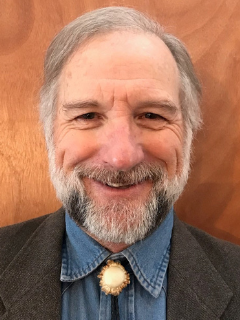
Date: Tue Jun 26, 2018
Time: 10:00 AM - 11:45 AM
Moderator: N/A
Agriculture in Canada is on the cusp of a dramatic revolution as a result of the digital transformation of the industry driven by the emergence of tools such as Precision Agri-Food Technologies and the Internet of Things (IoT, a network of interconnected physical devices capable of connecting to the internet). With the expected exponential growth of data from the application of innovative technologies such as IoT by the Canadian Agri-Food industry, Canada has the potential to gain valuable insights through leveraging this data using powerful tools such as data analytics. These tools can provide producers and industry stakeholders with intelligent decision support tools that will enable actionable outcomes, moving beyond current system monitoring and alerts. Ultimately, it is through data, analytics and emerging technologies that Canadian Agri-Food will be able to address current and future challenges; to identify best management practices to reduce nutrient use or antimicrobials in livestock farming or the challenges of food security and safety. Data, analytics and technology will provide insights into overall trends, insights into the overall landscape of the Canadian Agri-Food industry, allowing for governments to implement smart policies based on authentic and real-time data and support/showcase sustainable Canadian farming practices to consumers; provincially, nationally and globally.
.jpg)
Accurate prescription maps are essential for effective variable rate fertilizer application. Grid soil sampling has most frequently been used to develop these prescription maps. Past research has indicated several technical and economic limitations associated with this approach. There is a need to keep the number of samples to a minimum while still allowing a reasonable level of map quality. As can be seen, precision agriculture management requires understanding soil at increasingly finer scales. Conventional soil sampling and laboratory analyses lack this granularity and are time consuming and expensive. Remote soil sensing overcomes these shortcomings. Through its collection of spatial data with quicker, cheaper, and less laborious techniques, remote soil sensing has the opportunity to enhance precision farming today. The objectives of this article are to review the challenges facing conventional soil sampling and evaluate new remote soil sensing tools to enable farmers to better utilize effective solutions to high fertilizer costs and low commodity prices. Soil samples were collected on site in a grid spaced throughout a field in west central Illinois at the appropriate timing and in the agricultural cycle such that representative levels of Nitrogen (N), Potassium (K) and Phosphorous (P) were present. The samples were stored in sealed paper bags, then sent to Waters Agricultural Laboratories to have the levels of N, P, and K measured. The samples were then sent to SpecTIR to be assessed in their lab environment using spectrometry techniques. The fundamental conclusion is that it is possible to measure N, P, and K (and probably other desired nutrients/elements) by using a spectrometry genre technology. This was the desired objective of the first milestone and the lab acquisition and subsequent analysis demonstrates the ability to detect the presence and quantify the concentration of N, P, and K in soil.
.png)
In precision agriculture, the understanding of yield variability, both spatial and temporal, can deliver essential information for the decision making of site-specific crop management. Since commercial yield mapping started in the early 1990s, most research studies have focused on spatial variance or short-term temporal variance analyzed statistically in order to produce trend maps. Nowadays, longer records of high-quality yield data are available offering a new potential to evaluate yield variability over time by using alternative (to the traditionally statistical approach) analysis methods, for example pattern recognition. The research idea of Multi-temporal Yield Pattern Analysis (MYPA) was inspired by the digital soil mapping method Multitemporal Soil Pattern Analysis (MSPA). In order to produce soil property maps, the MSPA method extracts stable soil reflectance pattern from satellite time series using pattern recognition combined with statistical pattern stability analysis. The MYPA approach is the adaption of image analysis techniques of the remote sensing discipline (here: pattern recognition) to agronomic data (here: yield data). The current state of the MYPA method will be presented that makes it possible to i) select outlier yield maps from yield map time series, ii) detect spatially homogenous yield pattern, and iii) evaluate their spatiotemporal variability. This method enables the generation of site-specific crop management zones considering both the productivity and stability of yield over space and time. The MYPA method consists basically of following steps: (1) identification and elimination of outlier yield maps, (2) yield pattern detection using principal component analysis; (3) evaluation of spatiotemporal yield pattern stability using statistical per-pixel analysis; and (4) management zones delineation based on k means clustering. Results from one demonstration field are presented and contrasted (with favourable outcomes) with the more traditional statistical mean approach to multi-temporal yield pattern delineation.

The ultimate goal of Precision Agriculture is to improve decision making in the business of farming. Many broadacre farmers now have a number of years of crop yield data for their fields which are often augmented with additional spatial data, such as apparent soil electrical conductivity (ECa), soil gamma radiometrics, terrain attributes and soil sample information. In addition there are now freely available public datasets, such as rainfall, digital soil maps and archives of satellite remote sensing which can be used to interpret the crop-growing environment. However, rather than analysing one field at a time as is typical in precision agriculture research, there is an opportunity to explore the value of combining all this data for multiple fields/farms and years into one dataset. Using these datasets in conjunction with machine learning approaches offers the possibility of building predictive models of crop yield. In this study, several large farms in Western Australia were used as a case study, and yield monitor data from wheat, barley and canola crops from three sequential that covered approximately 11,000 to 17,000 hectares in each year were used. The yield data was processed to a 10 m grid, and a space-time cube of predictor variables was built at this scalle. This consisted of grower-collected data such as ECa and gamma radiometrics surveys, and the freely-available public data. The data was aggregated to a 100 m spatial resolution for modelling yield. Random Forest models were used to predict crop yield of wheat, barley and canola using this dataset. Three separate models were created based on pre-sowing, mid-season and late-season conditions to explore the changes in the predictive ability of the model as more within-season information became available. These time points also coincide with points in the season when a management decision is made, such as the application of fertiliser. The models were evaluated with cross-validation using both fields and years for data splitting, and this was assessed at the field spatial resolution. Cross-validated results showed the models predicted yield accurately, with a root mean square error (RMSE) of 0.36 to 0.42 t ha-1, and a Lin’s concordance correlation coefficient (LCCC) of 0.89 to 0.92 at the field resolution. The models performed better as the season progressed, largely because more information about within-season data became available (e.g. rainfall, remote sensing). The yield forecasts were used to formulate basic nitrogen application scenarios. The more years of yield data that were available for a field, the better the predictions were, and future work should use a longer time-series of yield data. The generic nature of this method makes it possible to apply to other agricultural systems where yield monitor data is available.
Remote sensing (RS) and proximal soil sensing (PSS) technologies offer an advanced array of methods for obtaining soil property information and determining soil variability for precision agriculture. A large amount of data collected using these sensors may provide essential information for precision or site-specific management in a production field. In this paper, we introduced a new clustering technique was introduced and compared with existing clustering tools for determining relatively homogeneous parts of agricultural fields. A DUALEM-21S sensor was used, along with high-accuracy topography data, to characterize soil variability from three agricultural fields in Ontario, Canada. Sentinel-2 data were used for measuring bare soil and historical vegetation indices (VIs). The custom Neighborhood Search Analyst (NSA) data clustering tool was implemented using Python. In this NSA algorithm, part of the variance of each data layer is accounted for by subdividing the field into smaller relatively homogeneous areas. The algorithm was illustrated using field elevation, shallow and deep ECa, soil pH, and several VIs.



Precision Agriculture has been gaining interest due to the significant growth in the fields of engineering and computer science, hence leading to more sophisticated methods and tools to improve agricultural techniques. One approach to Precision Agriculture involves the application of mathematical models and machine learning to fertilization optimization and yield prediction, which is what this research focuses on. Specifically, in this work we report the results of predicting yield and protein content of winter wheat over four farms based on the levels of nitrogen fertilizer applied to the fields. The intent is to use these predictions as a basis for prescribing fertilizer application to optimize net returns on the subsequent harvest. More specifically, we compare methods based on multiple regression (linear and non-linear) and neural networks (shallow and deep). Our results indicate that a deep neural network based on the stacked autoencoder that includes spatial sampling yields the best results.



The benefit of precision agriculture must be defined both in terms of profitability as well as environmental enhancement. Maintaining biodiversity within the landscape is central to the protection of ecosystem services. The diversity-stability hypothesis suggests that there is a positive correlation between increasing diversity and ecosystem stability. In this context, diversity is defined within the context of species richness, strength of community interactions and functional traits. In this presentation, I will explore the diversity-stability hypothesis and illustrate how precision agriculture can play a pivotal role in identifying opportunities to enhance biodiversity within our agricultural production system. The fundamental question that drives this research is, “How resistant or resilient are our agroecosystems to stress, such as climate change?" The transition of yield maps to profitability maps can play a major role in identifying areas within a field that are consistently areas of economic loss. Identification of these areas allows for the possibility of converting this land base to the protection of ecosystem services via the enhancement of biodiversity. There is, however, a general perception within the agricultural community that ecological and environmental conservation will equate into a loss of on-farm profitability. Profitability mapping may allow this perception to transition to an "enhancement in profitability” through ecological and environmental conservation. In addition, the agricultural industry is being pressured to respond to national and international market demands such as,”How green is your product? What is the carbon foot print of your production practices?" Consumer preferences are influenced highly by environmental issues. How then does a farmer or a country protect his/her "market brand". Precision agriculture can play an important role in helping to address these issues. Knowledge generated by precision agriculture can be used to connect linkages with ecology and agronomy. Such linkages will enhance ecosystem stability, on farm profitability and protect access to national and international markets.
